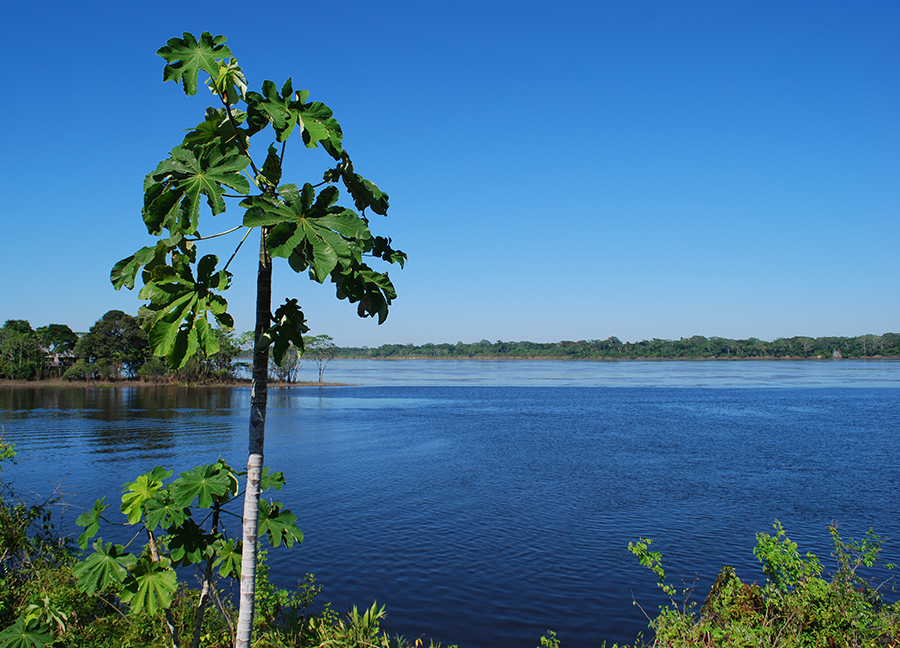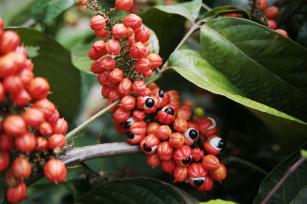Microorganisms of economic interest are found in Amazonian rivers
Microorganisms of economic interest are found in Amazonian rivers
Photo: Daniel Medeiros

The work combines different tools in a multidisciplinary research integrating microbiology, chemistry and genomics (sequencing of complete genomes, gene editing and metagenomics)
|
In Manaus (Amazonas state), scientists from Embrapa, who are conducting studies with microorganisms collected from sediments from Amazonian rivers, have identified bacteria and fungi with biotechnological potential. These small beings can generate valuable molecules for medical and agricultural use or for application in industrial processes, according to the researcher at Embrapa Western Amazon, Gilvan Ferreira da Silva, who coordinates the project. He points out that this is the first large-scale study using cultivable and non-cultivable microorganisms present in sediments from the Amazon Basin.
According to the scientist, the work combines different tools in a multidisciplinary research integrating microbiology, chemistry and genomics (sequencing of complete genomes, gene editing and metagenomics). "The point is not only the identification of microorganisms with biotechnological potential", the researcher explains, adding that it is important for the group to make the chemical identification of bioactive molecules and to identify the genes and biosynthetic pathways of these compounds. Therefore, it will be possible to maximize the production of the compounds of interest through gene editing.
Rivers of almost 7 thousand kilometers longDuring the sediment collection for this research work, Embrapa Western Amazon counted on a partnership with the Institute of Weights and Measures of Amazonas (Ipem/AM), a branch of the National Institute of Metrology, Quality and Technology (Inmetro). The collection expeditions were made at the Basic Fluvial Inspection and Research Unit of Ipem/AM. The expeditions by boat covered approximately 6,850 km of Amazonian rivers. The collection was made every 50 km, in four Amazon rivers: Madeira, Purus, Solimões and Juruá. This route required long trips, some of them took more than 30 days sailing on each river. |
After the collection, the team at the Molecular Biology Laboratory of Embrapa Western Amazon carried out the analysis of more than 1,000 microorganisms obtained from river sediments.
At the Molecular Biology Laboratory of Embrapa Western Amazon, they are carrying out isolation of cultivable microorganisms and DNA extractions for metataxonomy and functional metagenomics studies. It is estimated that only 5% of the microorganisms are cultivable. The goal for this year is to obtain the complete genome of more than 60 selected bacteria.
Silva says that in the case of non-cultivable microorganisms (those that are unable to grow in culture medium), and that are the majority of the microbiota, the project intends to extract the DNA from the sediments and, through different sequencing platforms, obtain the environmental genomes and identify genes and their metabolic pathways. The team has been gaining expertise in the analysis of genomes aimed at the production of secondary metabolites.
Looking for molecules with antiparasitic and anticancer action
Last year, nine complete genomes of isolated fungi from the Amazon with biotechnological potential were sequenced, of which five are new species. These genomes are being analyzed to identify metabolic pathways related to the production of molecules of interest, mainly of antimicrobial, antiparasitic and anticancer actions.
Besides contributing to the study of Amazonian biodiversity and the identification of new species of microorganisms, the research is enabling training and greater mastery in the use of cutting-edge technologies in molecular biology and also the progress towards results with practical application for various industrial segments.
Silva informs that the microorganisms were selected according to their activity. "The most promising ones are being identified through morphology and molecular phylogeny," he adds
Possible application in agriculture and textile industry
Some have antimicrobial activity against phytopathogens of agricultural interest. As an example, producers of antimicrobial molecules with potential for application in various agricultural production chains were selected, such as in the control of phytopathogens for guaranazeiro crops, Amazonian fruit trees (cupuaçu, cocoa) and vegetables. The control of diseases in agricultural crops, for example, is capable of improving the production and income of small and large-scale farmers. They may also reduce the use of chemical pesticides with consequent positive impacts on the environment and human health.
The team selected microorganisms that participate in the production of enzymes, such as protease, amylase, lipase and cellulase, which in turn have application in several industries. Cellulases are used for softening jeans fibers, for the cellulose industry and for use in bioethanol. Lipase, in addition to application in the textile sector, is also used in the production of detergents, leather industry and food flavorings. Amylase is used in the food industry and protease has several applications, such as in the production of detergents and biodiesel.
It was also selected microorganisms that act in the production of siderophore (ferric ion chelating molecules that allow the absortion of iron from the soil). These siderophore molecules form stable bonds with iron, making it soluble and transporting it to places of interest.
Microorganisms that act in the solubilization of phosphates have also been found, that is, they allow the availability of phosphorus, which is normally found in its insoluble form in soils. These activities are important to make nutrients available to plants.
Silva points out that cutting-edge techniques are adopted in these studies, such as large-scale sequencing for obtaining complete genomes and gene editing through CRISPR-CAS9, combined with the chemical identification of molecules produced by the Amazonian microbiota. "This integration allows advancing in the functional analysis of the biochemical routes related to the molecules of interest and in obtaining strains of microorganisms that are superproducers of high-value molecules, as well as in cutting-edge studies integrating genomics and chemistry", he explains.
The future application of these results will provide development for bioproducts based on the Amazonian microbiota. In addition, the study is of scientific importance, since it allows advances in the areas of molecular biology, chemistry and genomics applied to microbiology.
A joint effort to prospect Amazonian bioactive
Over 20 students take part in this Embrapa Western Amazon study, including postdoctoral, doctoral, master and undergraduate scholars. The team works at the Molecular Biology Laboratory, coordinated by the researcher Gilvan Ferreira da Silva. The research is carried out in partnership with more than ten national and foreign institutions.
The activities started with the project “Microoma - Amazonian Microbiomas: an approach to sustainability and prospecting for bioactives” (Microoma - Microbiomas Amazônicos: uma abordagem para sustentabilidade e prospecção de bioativos), which carried out research aimed at identifying molecules and metabolic pathways related to the production of compounds of biotechnological interest.
Other research projects were articulated based on this work with Amazonian sediments with the leadership of Embrapa Western Amazon and the participation of seven Brazilian educational institutions: Federal University of São João Del Rei (UFSJ), Federal University of Roraima (UFRR), Federal University of Mato Grosso (UFMT), State University of Amazonas (UEA), Federal University of Amazonas (Ufam), Federal University of Southwest Pará (Ufopa), Federal University of Viçosa (UFV), and German University Technische Universität München (TUM); as well as the National Amazon Research Institute (Inpa) and two other Embrapa units: Agricultural Informatics and TropicalAgroindustry. The project is supported by the National Council for Scientific and Technological Development (CNPq), the Amazonas Research Support Foundation (Fapeam) and the Coordination for the Improvement of Higher Education Personnel (Capes).
Photos: Felipe Santos da Rosa (Amazonas) e Siglia Souza (Gilvan Ferreira da Silva)
Síglia Souza (MTb 66/AM)
Embrapa Western Amazon
Press inquiries
amazonia-ocidental.imprensa@embrapa.br
Phone number: +55 (92) 992852976
Further information on the topic
Citizen Attention Service (SAC)
www.embrapa.br/contact-us/sac/

